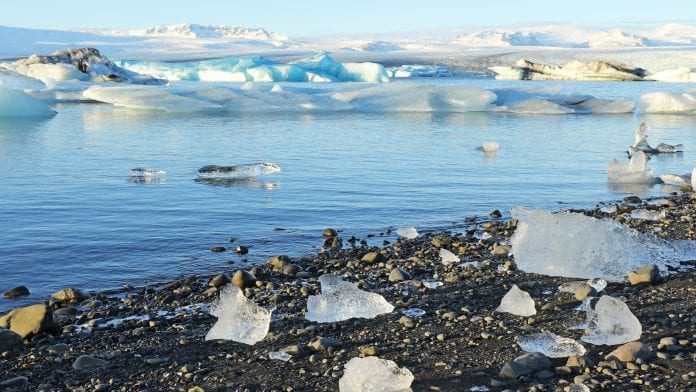
Potentially having ominous implications for human health worldwide, scientists have discovered an unsettling multidrug resistance in distant Arctic soil microbes.
Published in Environment International, a University of Kansas (KU), USA, geologist’s work in the remote High Arctic of Norway has uncovered the startling global spread of antibiotic-resistant microbes from Arctic soil microbes, including multidrug resistance that could cause detrimental implications for the health of humans worldwide.
Exposing the Arctic soil microbes
Jennifer Roberts, professor and chair of geology at KU, began by investigating the microbial geochemistry of thawing permafrost and its release of methane, a powerful greenhouse gas that quickens global climate change.
Collected in the Kongsfjorden region of Svalbard, Norway, Roberts found that upon following up analysis of the soil samples, the antibiotic-resistant genes had transferred into soil-microbe populations in one of Earth’s most remote locations.
Roberts explains: “The study offered a good opportunity to test soil samples for antibiotic genes with the hypothesis that Svalbard was such a remote and isolated place, we wouldn’t find any evidence of such genes.”
“In contrast, we found quite a few including superbug antibiotic-resistant genes like the New Delhi gene, which first emerged in India not very long ago. This was a surprise – the genes we found clearly had a short transfer time between being discovered in India and our group detecting them in the Arctic only a few years later.”
The research team genetically sequenced DNA from 40 samples of soil at eight locations in Svalbard, discovering 131 antibiotic-resistant genes.
One antibiotic-resistant gene found is called blaNDM-1. Originally detected in New Delhi in 2007, the gene triggers resistance to carbapenem antibiotics, a last-resort remedy for otherwise untreatable infectious disease. The demonstrated spread of blaNDM-1, in particular, is highly concerning, drawing attention to the rising crisis of global antibiotic multidrug resistance.
The researchers say the antibiotic-resistant genes could have taken only a few pathways to the Arctic.
The Arctic soil microbes and their origins
“They likely originated from pathogens that were exposed multiple times to different types of antibiotics – that’s how we get these acutely antibiotic-resistant strains, where they persist even despite the use of ‘last-resort’ treatments,” Roberts adds.
“Some of the sites where we found the New Delhi strain of gene aren’t terribly far from the main research base, so there’s a possibility human waste was involved. We also observed colonies of nesting birds in low-elevation places, like small lakes and other sources of open water during maximum thaw, and that was where we saw the highest concentrations of these genes.
“We also detected them in places that didn’t have open water but had a lot of small animals like foxes, and you can trace a vector between a watering hole or small lake where you have lots of birds and small mammals going to drink and then picking up whatever genes are there.”
Developing a benchmark for antibiotic-resistant
With research expertise in hydrochemistry and microbial geochemistry, Roberts worked to develop a benchmark for antibiotic-resistant genes naturally found in Svalbard so the team could distinguish them from ‘foreign’ multidrug-resistant genes transferred to the Arctic from regions where antibiotics are used in human and animal populations to treat disease.
Roberts discusses: “Because the migration of these genes is of such great concern, the next question becomes, ‘Are these antibiotic-resistant genes native – or did they get transferred?'”
According to Roberts, antibiotic resistance travelled between microbes via ‘lateral gene transfer’. In this process, pathogens travel into water through faeces, die and release large quantities of free genetic material into the water.
This genetic material does not easily degrade, with the result that other organisms end up picking up the genes, as well as any corresponding resistance.
“It’s not that we have some kind of robust community of E. coli or other pathogen living in the surface waters in the Arctic,” Roberts said. “Instead, some antibiotic-resistant pathogen was brought in from outside sources – and now that resistance has been dispersed as genes are picked up by other organisms that were already populous in the environment.”
According to the researchers, this discovery shows that antibiotic multidrug resistance is now global in nature.
Time to think of water system management
“We have to remember that we got antibiotics, like penicillin, from soil microorganisms to begin with,” Roberts said.
“Microorganisms have used resistance capabilities to overcome immunities in the environment for a long time, producing antibiotic-resistant genes that are considered natural and native. But with the use of manufactured antibiotics for humans and animals all over the world, we’ve seen rapid evolution of resistant genes. We found both native and evolved antibiotic-resistant genes in the Arctic. The concern is that with resistance spreading on this scale, we may be approaching a post-antibiotic era where none of our antibiotics work because the pathogens, we’re trying to fight have picked up resistant genes via evolution or lateral transfer.”
Roberts explains how the findings show the importance of more careful stewardship of antibiotic use and the need for better treatment of wastewater around the world.
“Our human and animal use of antibiotics can have impacts that are beyond ourselves and beyond our local communities – they are global,” she concludes.
“It’s really important for us to start thinking of water system management and antibiotics use in ways that are global – and to start reducing and controlling some of the spread that is clearly not controlled at the moment.”






















